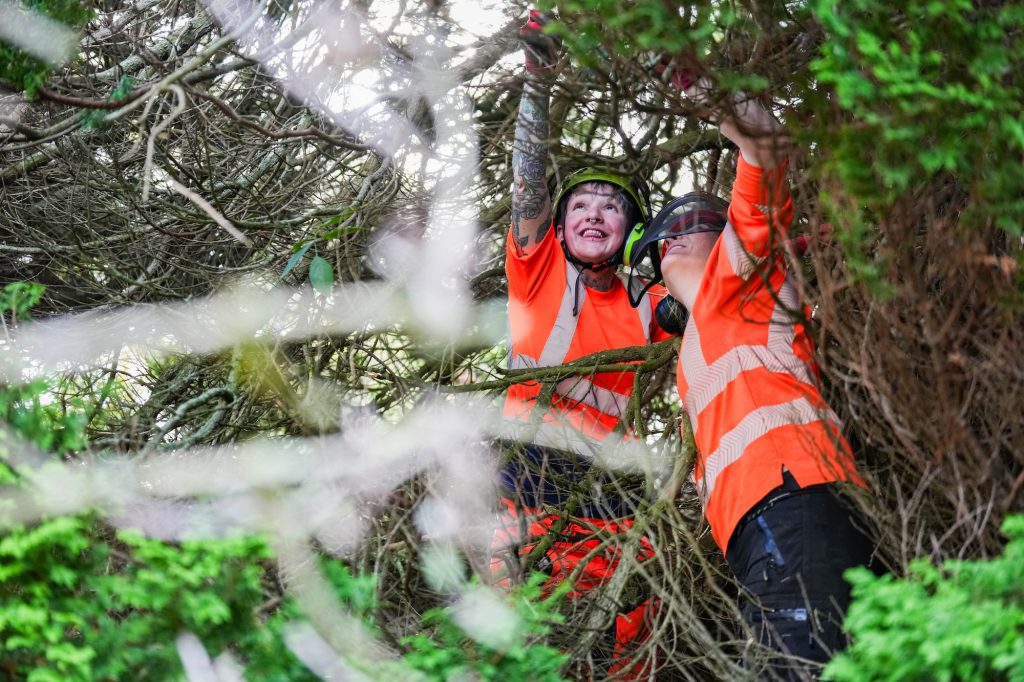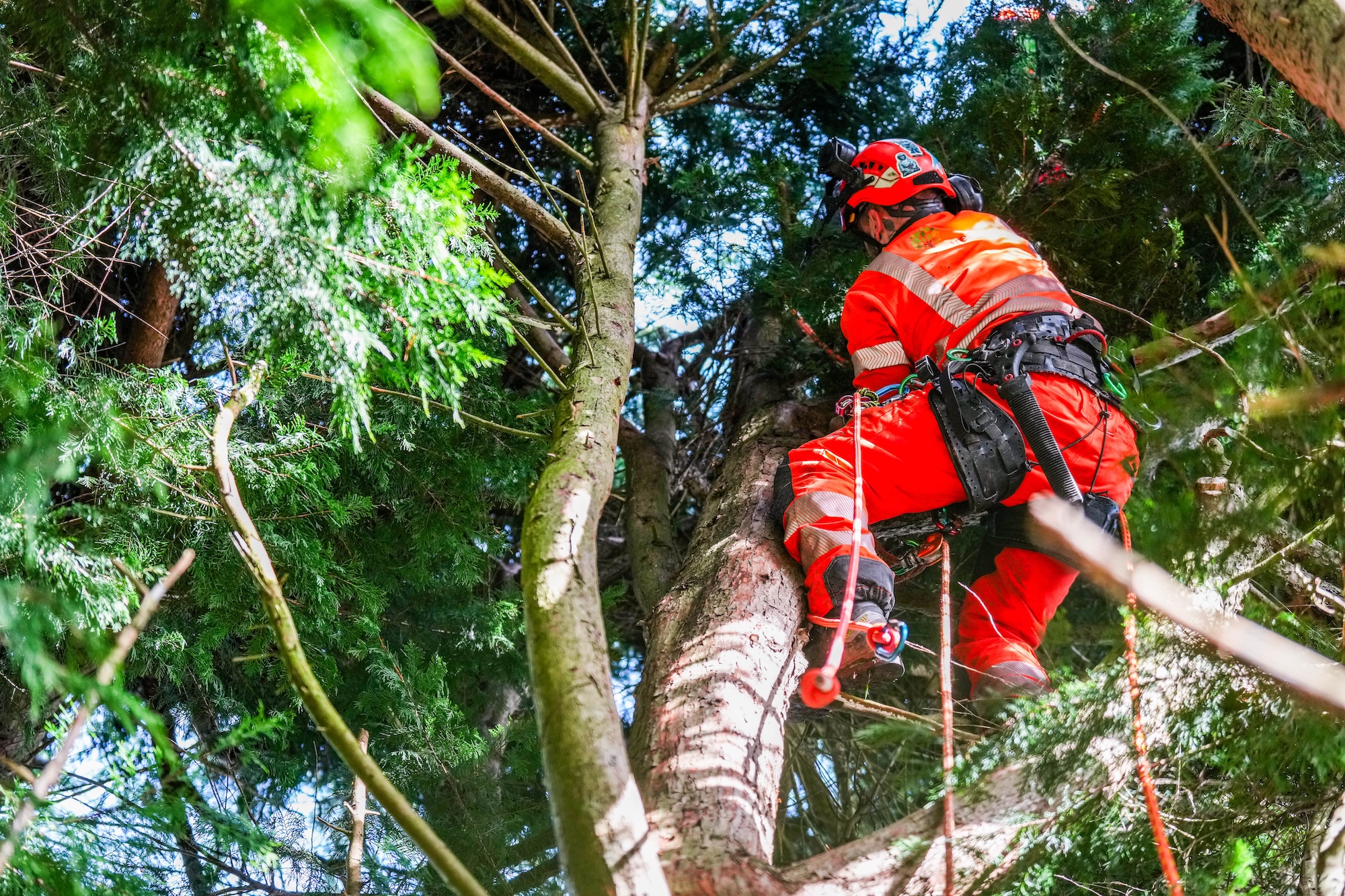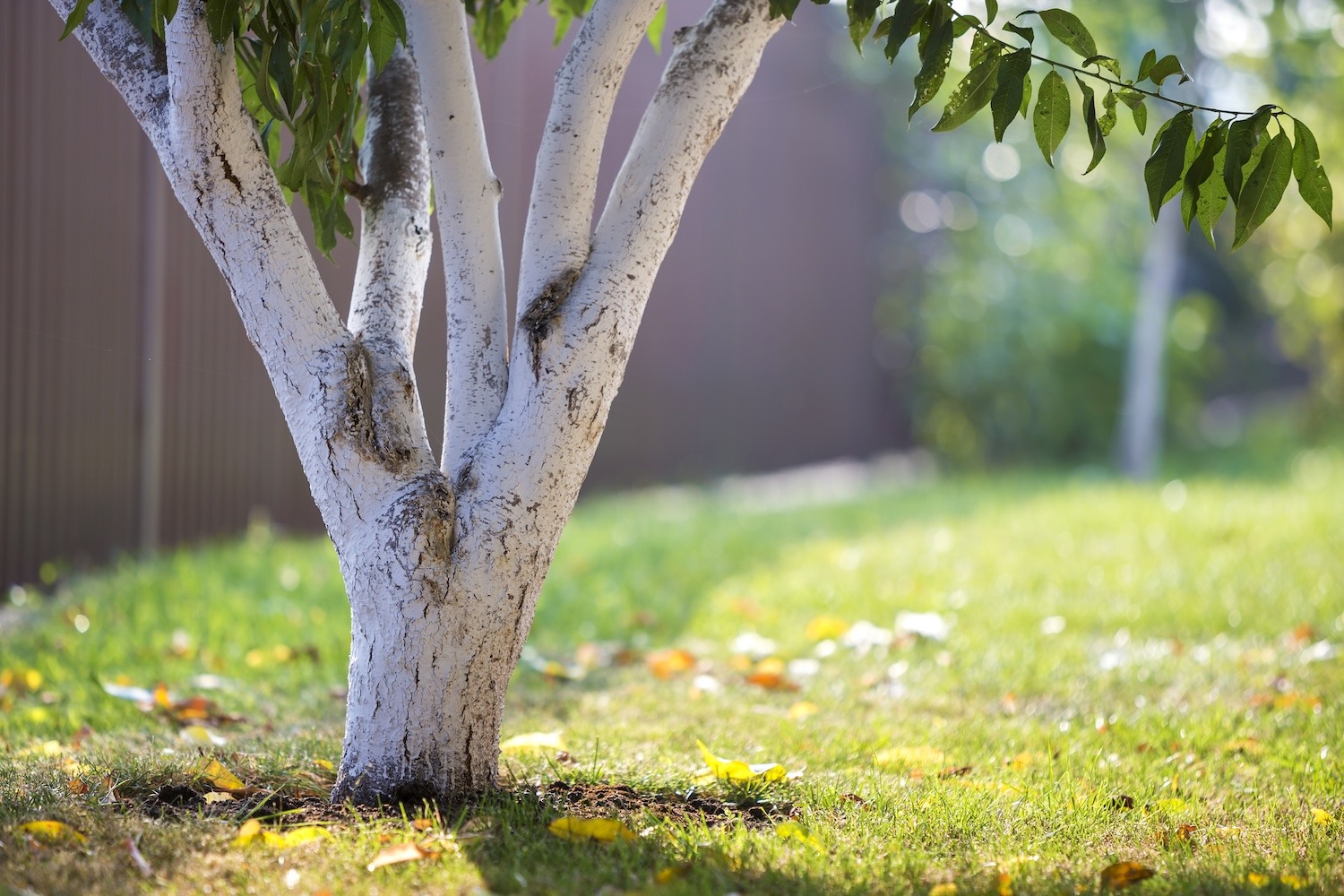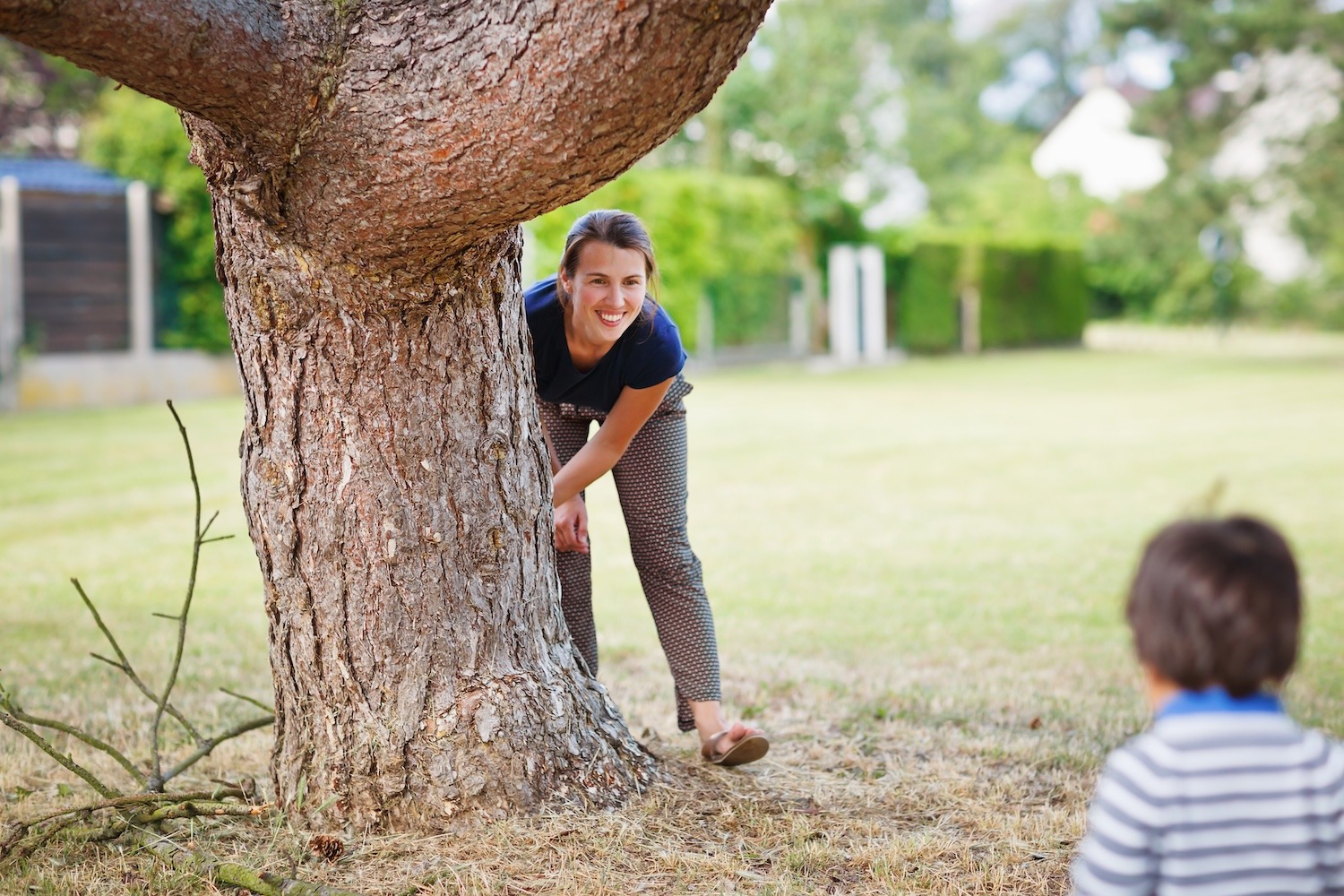Tree pruning is a vital part of responsible tree management—but understanding when to prune is just as important as knowing how. Whether you’re managing a mature oak, shaping young trees, or maintaining trees for safety, knowing when to prune trees in Devon can significantly affect the tree’s response and structural integrity.
In this article, we outline the best times of year for different pruning objectives, the importance of correct timing, and how professional tree pruning Devon services ensure compliance with best practice standards, including BS3998:2010.

Why Timing Matters When You Prune Trees in Devon
The timing of pruning has a direct influence on:
- The tree’s physiological response
- The likelihood of pathogen entry or decay
- The tree’s ability to compartmentalise pruning wounds
- Seasonal growth patterns and visual form
Carrying out work at the appropriate time minimises the physiological impact and supports a positive structural and biological response.
Best Times of Year to Prune Trees in Devon
Winter (November–February): Dormant Season
Best for: Crown reduction, crown thinning, formative pruning of deciduous species
Winter is an ideal time to carry out pruning on many deciduous trees while they are in a dormant state. With reduced biological activity and no leaves obscuring visibility, it’s easier to assess branch structure and perform targeted works.
Objectives commonly undertaken in winter include:
- Crown reduction to reduce canopy size
- Crown thinning to improve light penetration
- Formative pruning of young trees
- Removal of structurally unsound or hazardous branches
Pruning during dormancy may minimise physiological impact and allows time for the tree to respond before new growth emerges in spring.
Avoid pruning tender or newly established trees during hard frosts, and note that some species—such as birch or maple—may be prone to excessive sap flow (known as ‘bleeding’) if pruned too early at the end of dormancy.
Spring (March–May): High Growth and Limited Intervention
Best for: Minimal pruning only, such as the removal of dead wood or small crossing branches
As trees shift into active growth, their resources are focused on producing new leaves and shoots. Pruning at this time can lead to increased susceptibility to stress and delayed compartmentalisation of pruning wounds.
Where possible, postpone non-essential works until later in the year. However, minor interventions—such as deadwood removal or formative corrections on young trees—can be completed with care.
Summer (June–August): Active Growth Phase
Best for: Crown lifting, crown thinning, removal of epicormic growth
Summer is an appropriate time for various maintenance tasks. Trees are in full leaf, allowing for accurate assessment of branch shading, density, and structural interaction. Summer pruning is often used to:
- Thin the crown to increase airflow and reduce wind resistance
- Lift the crown for clearance or aesthetics
- Remove epicormic growth or low lateral shoots
- Manage excessive extension growth on young trees
Pruning during summer allows you to monitor the tree’s response in real-time and reduce excessive regrowth in some species.
Autumn (September–October): Proceed with Caution
Autumn is not typically recommended for major pruning works. As trees begin senescence and nutrient relocation, their ability to respond to wounds slows, and the risk of decay fungi entering pruning sites may increase.
If pruning is necessary during this period, limit it to:
- Removal of structurally unsound or hazardous branches ahead of winter storms
- Light crown lifting or the removal of storm-damaged limbs
Wound closure and compartmentalisation may be delayed if pruning is conducted too late in the season.
Pruning Evergreens in Devon
Evergreens—including holly, pine, and laurel—should generally be pruned in late spring or early summer. Unlike deciduous trees, evergreens do not become fully dormant, and heavy winter pruning may lead to dieback or reduced vigour.
Formative pruning of young evergreen trees should be completed gradually to develop structure without removing too much foliage at once.
Common Pruning Objectives in Line with BS3998:2010
Professional pruning should always be undertaken with a clear objective. According to BS3998:2010, common recognised objectives include:
- Crown reduction: Reducing the overall size while retaining form
- Crown thinning: Selectively removing branches to increase light and airflow
- Crown lifting: Raising the canopy by removing lower branches
- Formative pruning: Shaping young trees to encourage strong future structure
- Pollarding (where appropriate): Ongoing management of specific species using defined techniques
Each objective requires tailored cuts and knowledge of species-specific responses.
Avoiding Common Mistakes in Tree Pruning
Poor or inappropriate pruning can compromise tree health, increase the risk of failure, and reduce amenity value. Mistakes to avoid include:
- Making large or unclean cuts, increasing the risk of infection
- Topping trees, which weakens structure and encourages poor regrowth
- Over-pruning, which reduces the tree’s ability to photosynthesise
- Pruning at incorrect times, resulting in poor wound response
- Ignoring legal protections such as Tree Preservation Orders (TPOs)
All pruning should be based on a detailed assessment by a qualified arborist and carried out in line with BS3998:2010.
Professional Tree Pruning in Devon
At Devon Tree Services, we provide expert tree pruning services across the county, tailored to your needs and compliant with the highest industry standards. Our team is fully trained, insured, and experienced in all aspects of arboricultural care, from crown reductions to formative pruning and safety work.
All pruning is undertaken in line with BS3998:2010 and relevant environmental legislation, including Wildlife and Countryside Act protections for nesting birds and habitat.
Book a Tree Pruning Consultation Today
If you’re unsure when or how to prune your trees, our team is here to help. We provide site-specific guidance, long-term maintenance planning, and practical support for both domestic and commercial clients.
Call Devon Tree Services on 01803 814126
Or email info@devontreeservices.co.uk to arrange a free consultation.



